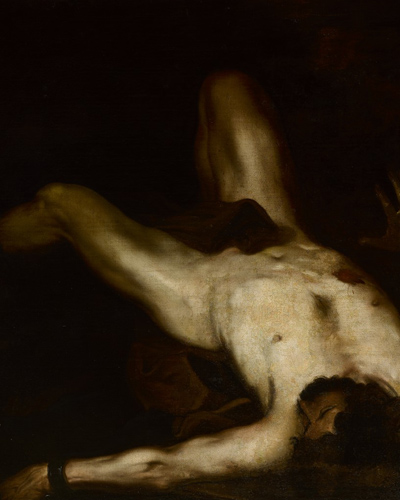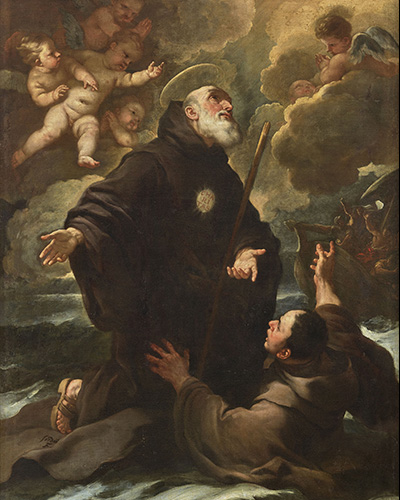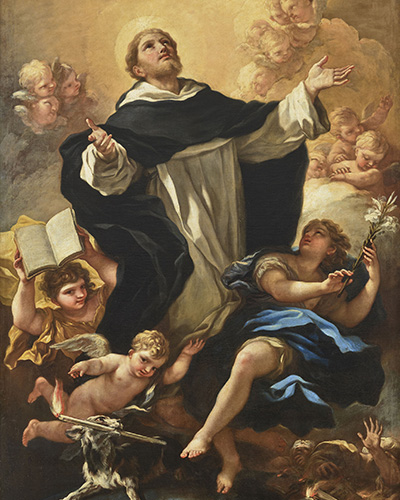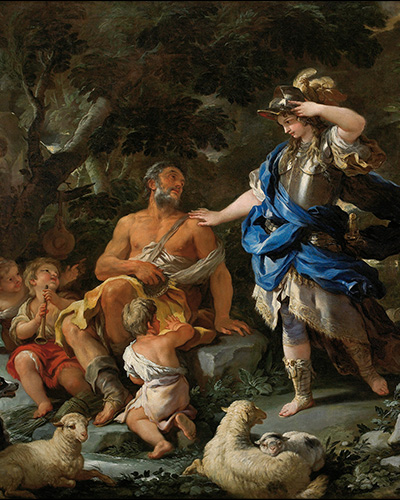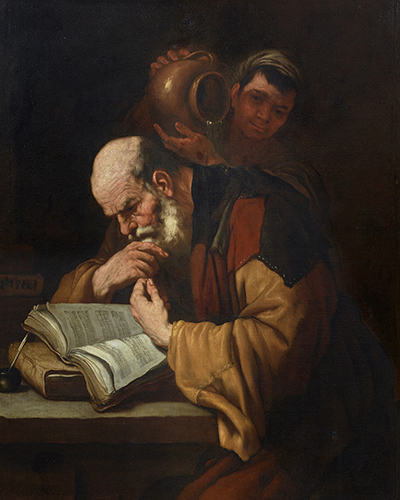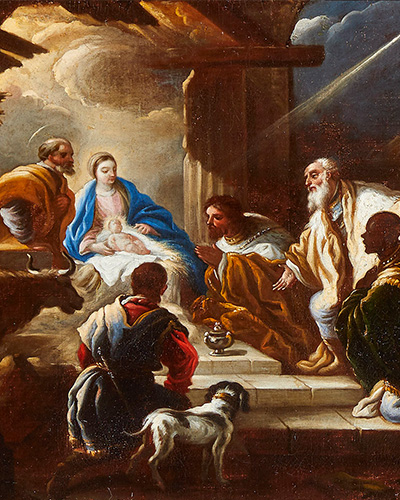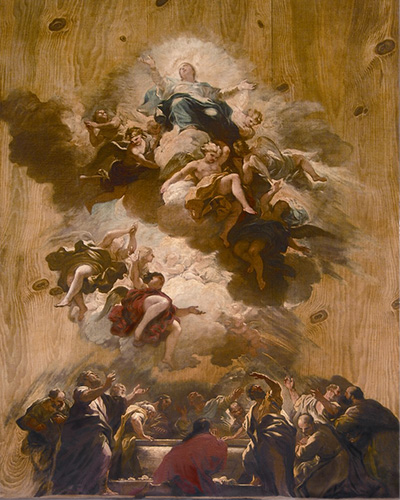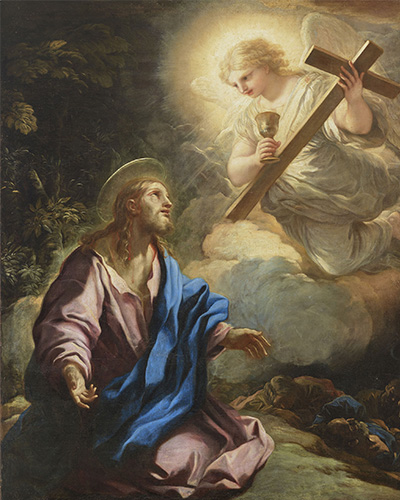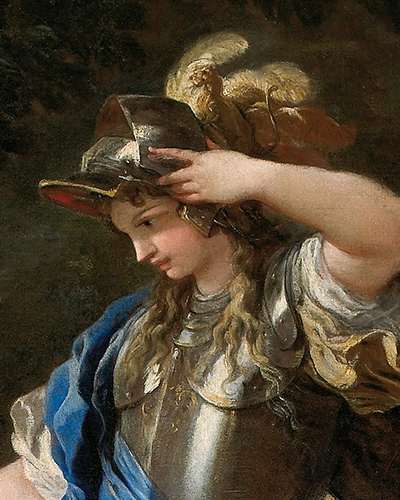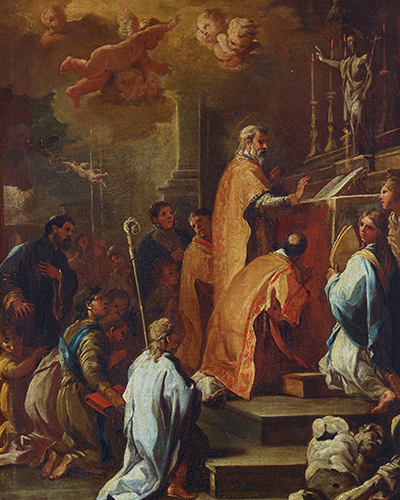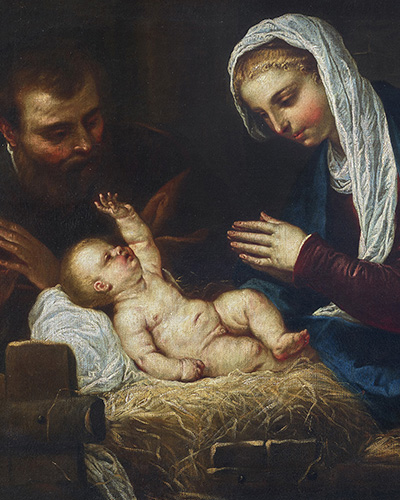The son of a modest painter who taught him the rudiments of the art of painting by forcing him to draw singular works in Neapolitan churches and galleries, from an early age he trained in the tradition of Ribera's naturalism from which, in the words of Oreste Ferrari and Giuseppe Scavizzi, he emerged very slowly. From the study of the great masters, on successive trips to other parts of Italy, especially Rome and Venice, he achieved a style that fused multiple influences: Ribera, the Venetian school, Mattia Pretti and Rubens; and a rapidity of execution that earned him the title of "...".Luca fa presto".
Although Luca Giordano did not arrive in Spain until 1692, his work was known and appreciated much earlier, as evidenced by the formidable commission of 122 paintings for the royal collections by Charles II through the viceroys of Naples, the Marquis of Carpio and the Count of Santisteban, of which forty-five arrived between 1683 and 1688. For this reason, when King Charles II asked him to paint the frescoes in the Monastery of El Escorial, he was eagerly awaited and aroused a certain admiration that enabled him to remain in Spain for ten years executing works in different churches and painting commissions for the royal and noble collections. The death of Charles II and the succession crisis it triggered prompted him to return to Italy in 1702, where he died three years later.
This admiration of the Spanish court contrasts with the assessment of his work by the neoclassical academicism as the starting point of the ".corruption of tasteand of the decline of Spanish painting, an assessment inherited by the 19th century, as shown by the fact that in 1877, in the post-mortem inventory of the collections of the 15th Duke of Medinaceli, Giordano is cited as "...".school of Cortona, Neapolitan decadent". It was not until well into the 20th century that the Neapolitan painter's technique and worth were revalued.
The presence of numerous works by the painter in the Medinaceli collection is due to his close relationship with Francisco de Benavides, 9th Count of Santisteban, Viceroy of Naples between 1688 and 1696, admirer, patron and supporter of Giordano, who in addition to continuing the work of his predecessor, the Marquis of Carpio, in sending works by the Neapolitan painter to the court, undoubtedly influenced Charles II's decision to have Giordano move to Spain and become his court painter. As a result of this close relationship, he commissioned a large number of works for his own collection (62 according to the inventory of assets dated 1716, 80 according to that of 1750) which, when incorporated into the entailed estate of his House of Santisteban del Puerto and linked to that of Medinaceli in 1789, were added to the latter's collections where, thanks to their links, they remained united until their legal disintegration in the penultimate decade of the 19th century and their physical disintegration in the early 20th century.
Antonio Ponz emphasised the exceptional nature of the presence of such a large number of Giordano's works in a private collection: "...the presence of such a large number of Giordano's works in a private collection is exceptional.The Duke of Santisteban has a large number of paintings by Lucas Jordán, who had them painted in Naples by an ascendant of the aforementioned lord, when he was Viceroy of that Kingdom. A portion of them represent various fictions of Taso in his Poem of Jerusalem; others are sacred subjects and of different saints. No house in Madrid outside the Royal Palaces has so many works by this author. There is also a portion of drawings of these same paintings and of others.".
Of this formidable ensemble, first divided up in the early 20th century among the children of the 15th Duke of Medinaceli, twelve paintings still remain in the collection of the Fundación Casa Ducal de Medinaceli.

